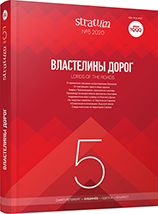Некоторые замечания по поводу миграций на территории между реками Муреш, Тиса и Дунай и Южными Карпатами в IX—X веках
Some Remarks on the Problem of Population Movements in the Area between Mureş, Tisza, Danube and the Southern Carpathians (9th—10th centuries)
Author(s): Silviu OţaSubject(s): History, Archaeology, Middle Ages, 6th to 12th Centuries, Migration Studies
Published by: Издательский дом Stratum, Университет «Высшая антропологическая школа»
Keywords: Carpathian-Danube region; 9th—10th centuries; Magyars; bits; saddle; stirrup; apliqué; horse
Summary/Abstract: The present study aims to discuss the issue of population movements in the area between the rivers Mureş, Tisza and Danube and the western part of Southern Carpathians, from the 9th century, after the fall of the Second Avar Khaganate and its conquest during the reign of the Hungarian king Stephen I (1000—1038). The populations attested here according to documentary sources were mentioned, but the attention focused on the grave goods, or on the items found in settlements or from stray finds. The chronology of the items from the analyzed area was corroborated with the dating of similar finds from south-eastern (the present-day Greece, Bulgaria, Macedonia, Serbia, Croatia, Slovenia) or Central Europe (Hungary and Slovakia). The territorial distribution of each item, the frequency of the discoveries in different regions, the origin, the way the items were manufactured and their association with foreign items in funerary features were also analyzed.Taking all these aspects into account, it could be noticed that some items cannot be attributed to certain populations and the same observation applies to funerary practices. Some cemeteries or settlements probably can be dated earlier than assumed until now (especially from the second half of the 9th century), while others were probably used by different groups of populations, belonging to the same broad chronological frame. This assumption is supported by different female fashion noticed in funerary features, graves with the same grave goods and sometimes different funerary practices, for both women and men. Items of different origin but found in the same grave and the similar dating for adornments or dress accessories of diverse traditions argue the presence of populations that do not have the same origin but use the same funerary area.
Journal: Stratum plus. Археология и культурная антропология
- Issue Year: 2020
- Issue No: 5
- Page Range: 277-293
- Page Count: 17
- Language: Russian
- Content File-PDF

